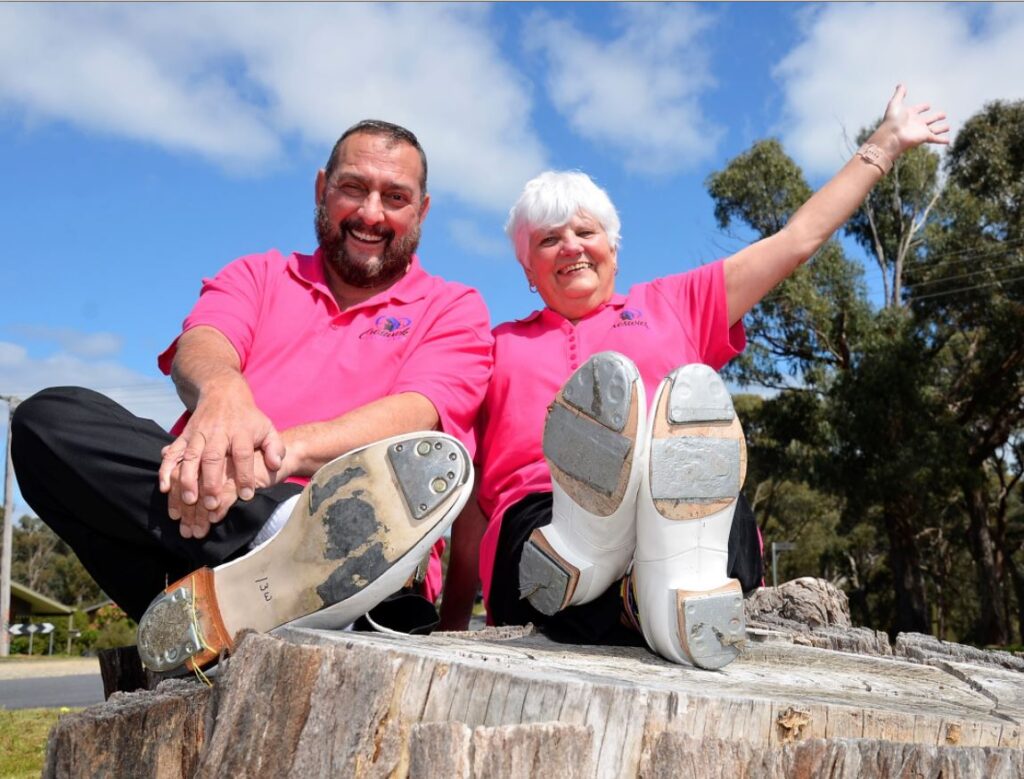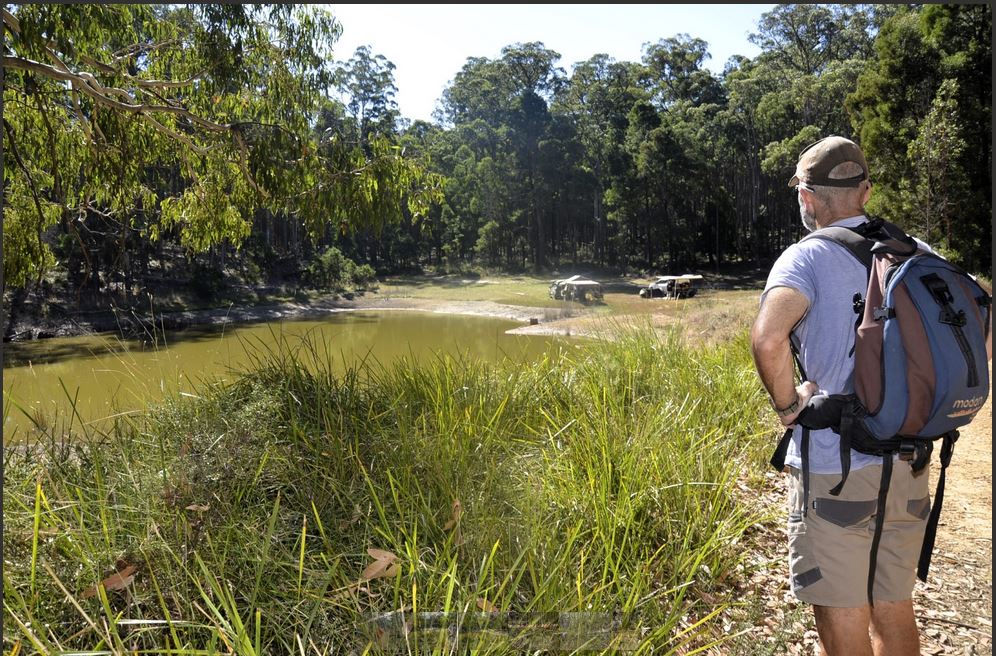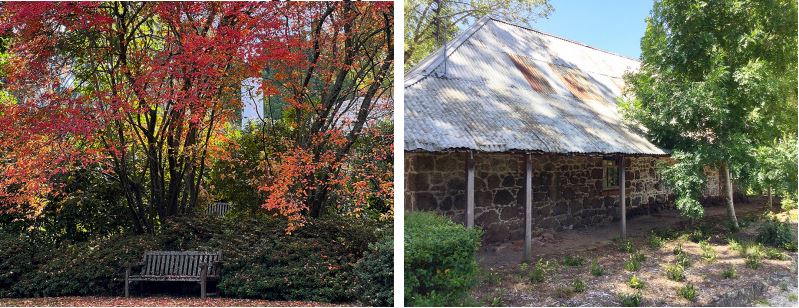October 14th, 2023Keen to clog in Creswick

Words and images: Eve Lamb
Mention the word “clogging” and many will immediately visualise heavy Dutch clogs and maybe pitch in a mental windmill and a few tulips as well. Wrong.
Turns out clogging is all about rhythm and not about wearing wooden clogs at all, as The Local discovered after catching up with experienced local clogging instructors Cheryl Holland and Nev Flegg (pictured above).
Cheryl, from Sulky just out of Creswick, and Creswickian Nev started the Creswick Cloggers just over two months ago. While they’d been quietly confident of a reasonable turnout, even they admit they’ve been surprised at the enthusiastic uptake among locals who are keen to clog.
The weekly sessions happen Tuesdays 6.30-8.30pm at the Creswick scout hall and have been been pretty well packed each time.
At this point Nev and Cheryl are considering starting a new beginners’ class either before Christmas or early in the new year depending on demand, and they’ve already registered the Creswick Cloggers to perform at next year’s CresFest.
“We’ve now got 22 cloggers – 14 beginners who have turned up and eight ex-cloggers,” Nev says.
Besides teaching clogging at Creswick Nev teaches the niche dance form in Footscray and also teaches line dancing as well, while Cheryl also runs weekly clogging classes in Cheltenham.
“Soon as you say clogging people think wooden Dutch shoes,” Nev laughs.
“We’ve actually got (moveable metallic) plates on our shoes and clogging taps rattle as opposed to tap dancer plates. Tap dancers have a solid piece of alloy bolted to their shoes.”
By way of demonstration, Cheryl and Nev pull on their nifty white dancing shoes, which look fairly flexible, and turn up the soles to display the metallic moveable plates attached beneath.
The plates mean the clogging steps they perform will make an infectious percussive sound that everyone within earshot will hear and find hard to resist, as Cheryl and Nev deftly demonstrate.
Coincidentally, both Cheryl and Nev took up clogging in 1988 while living in entirely different parts of Australia. Even more coincidentally, they both started teaching the dance form in 1992. Clogging has taken them both all over Australia and overseas to perform, often to high acclaim.
The new Creswick Cloggers group is affiliated with the Australian Clogging Association. In fact they’re just back from participating in the annual National Clogging Convention in Gosford, NSW, where they had a ball performing their chosen showcase dance, Cheryl says.
“The National Clogging Convention takes place in a different state each year. Next year it’s in Western Australia and we are hoping to hold it in Ballarat in 2025,” Nev says.
Beginners start out simply by learning to bend and straighten their legs in time with the music – “learning the down beat,” Cheryl says. They go on to master eight basic movements. “And the steps are cued so you don’t have to remember a whole routine,” Cheryl says. “You just remember the steps.”
Performed in time with other dancers and with those little moveable metallic plates attached to your soles, the steps create a very satisfying percussive impact. Cheryl and Nev say that while clogging used to be done pretty much entirely to country music, these days you can expect plenty of current contemporary pop in the mix.
“The actual word – ‘clogging’ means ‘time’ in Welsh so it’s actually a time dance,” Cheryl says.
I ask Cheryl and Nev what they love most about clogging, what drew them to it in the first place.
“The friendship and the fun,” Cheryl says. “And it takes us to a different state in Australia each year and to New Zealand.”
Nev – whose prior clogging fun traverses Seattle, San Francisco, Santiago, Los Angeles and Chicago, to name just a bit of where it’s taken him – says it’s tops for stress relief as well. Time out from life’s little, or not-so-little worries.
“I tried giving up once and I couldn’t do it. I really like teaching and so does Cheryl,” he says. The national association website informs that clogging – or “Appalachian Mountain Folk Dance” – is actually an American folk dance with origins in the Southern Appalachian Mountains of the US.
While it has strong ties to the step dances of the British Isles brought to the region by white settlers, clogging is also influenced by the traditional dance of Native Americans, and the traditional solo dances of African Americans.
Clogging is a misnomer, since it is not performed in clogs, although some of the original step dances from Europe were.
Nevertheless, the name persists, although in Appalachia, this form of percussive dance is often known as buck dancing or flatfooting. In recent times the dance form has spread to all parts of the world including Japan, England, Canada, New Zealand and Australia, as well as many European countries.
In Creswick, Cheryl and Nev say anyone interested can roll up and check out the class in action on a Tuesday evening, or you can email creswickcloggers@gmail.com if you’re interested in pulling on a pair of clogging shoes and joining in.










